Acrylic Pointillism, Oil & Coldwax, Mixed Media Original & Custom Fine Art for Your Meditation, Office or Living Spaces - Shop Online or Email for More Information
T (760) 880-8725
Email: studio@craigallenlawver.art
Craig Allen Lawver
16-566 Keaau-Pahoa Rd #188-205 Keaau, Hawaii 96749
JOURNAL : Entry
Nature & Pattern : Lifeforms & Art
Thoughts & Notes
On the subjects I paint
Journal Entry: Nature & Pattern : Lifeforms & Art
On Being : Thought, Action & the Universe

Pattern is ubiquitous in art, nature & in our minds. In the following words, I attempt to explore the nature of pattern; its forms & functions in the world. There is pattern hardwired into a complex, multi-faceted universe & in our ways of being.
Brightness Lies Within
The Word & World are Pattern
A Strange & Entangled Thread
The sense of a separate self is only a shadow cast by grammar.
Ludwig Wittgenstein
We & other species are shaped by pattern. By ones’ unseen, and those revealed in condition responses. We interact with each other and respond to our environment within a dense web of overlying patterns. In this journal entry, my intent is to explore how my work as an artist is shaped and filtered by pattern.
The world is a confusing and turbulent place, but we make sense of it by finding order. We notice the regular cycles of day and night, the waxing and waning of the moon and tides, and the recurrence of the seasons. We look for similarity, predictability, regularity. Those have always been guiding principles behind the emergence of science. We try to break down the complex profusion of nature into simple rules, to find order among what might at first look like chaos. That makes us all pattern seekers.
Philip Ball: Patterns in Nature: Why the Natural World Looks the Way It Does
Richard Feynman wrote, “Nature uses only the longest threads to weave her patterns, so each small piece of her fabric reveals the organization of the entire tapestry.”
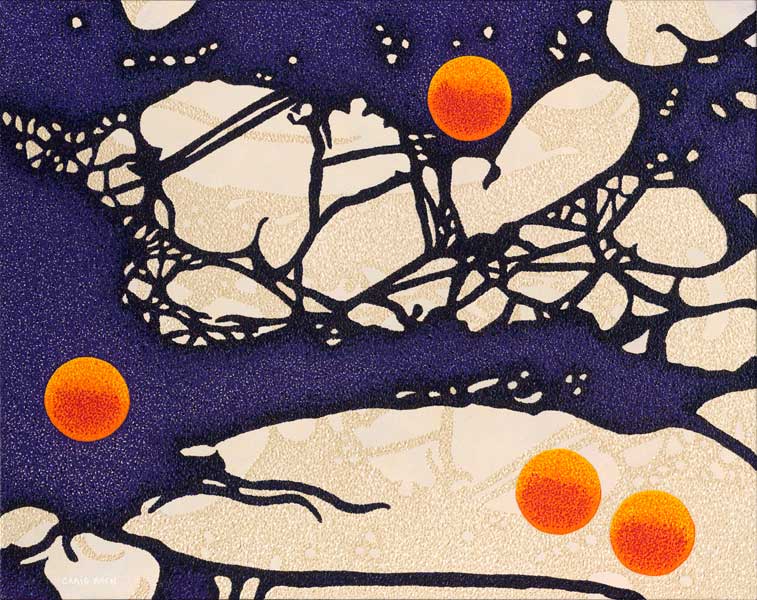
Spheres of Influence
Feynman, an American theoretical physicist, expressed himself like a poet and his words are visual and beautiful. They point at truths we often rush right by in this race called life. Everything is interconnected to everything else. To pull on one thread is to tug on many. Do I risk gaining a profound insight, or the complete unraveling of the entire fabric?

Threads run in every direction. I am woven into a complex tapestry. To understand self and art, to know these threads intimately, see the web and untangle life’s tapestry is the work of scientists and artists.
Waveform 14
I stumble upon, find and search for patterns. In pointillism, in making art, each movement, action or dot, each brushstroke, fingerprint, idea or insight is a thread tied to another thread. Understanding is gained in awareness and action.
The Art of Pattern
In Painting & the Natural World
Pattern exists all around us. We respond to its many forms, both consciously and unconsciously. I marvel at what I see in the world. In animal, insect, flower, fish or landscape, pattern is rich and intoxicating.
Pattern is visible above and below the waters edge. It is visible in clouds, the branching of trees, a spider’s web, ripples on a pond, in an aquatic rainbow.
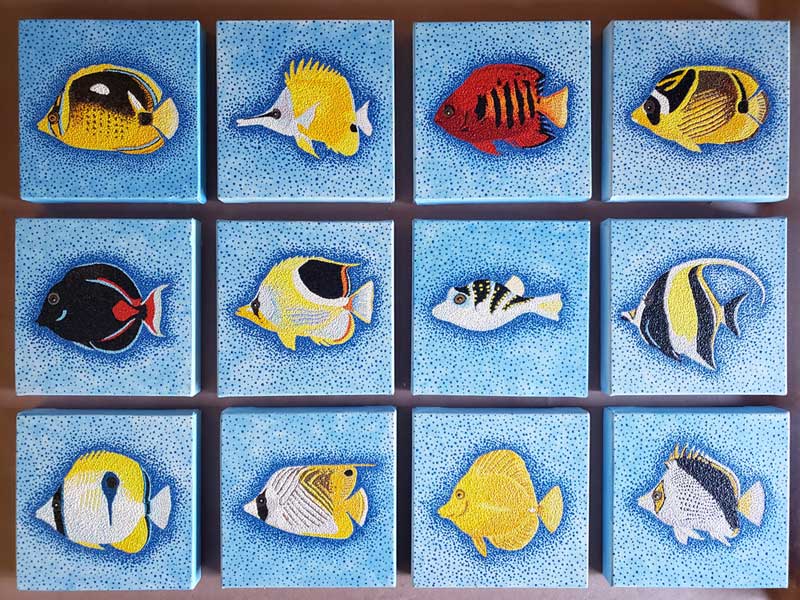
12 Fish Installation
Patterns exist deep and instinctual. I can often recognize patterns in the external world, but do I recognize the ones that manifest in my ways of thinking or being? Pattern roots in psychology, is a basic force in chemistry and in physics. It has been refined by evolution to a stunning degree. Habits are a by-product of pattern …
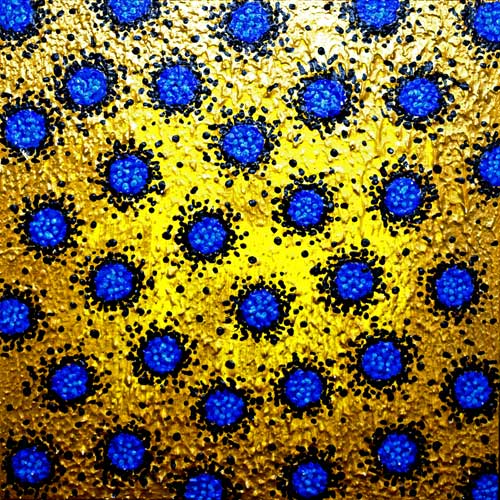
Pattern is manifest in my work. It would be subjective to say it does so in my use of language. I am conscious of its appearance in my art, alert to it in my driving desires. How does it shape my ways of communicating?
Cell: Yellow with Blue
(Father) Mother Nature
… A Master of Pattern
I believe there is only one true and original artist; the natural world. The best I can do is reinterpreting their many designs in the making of my own. My limits are obvious if not so easily accepted. Shaped by their patterns, I am inspired by the shapes they assume.
The copying of pattern is evident in the art of every culture on Earth.
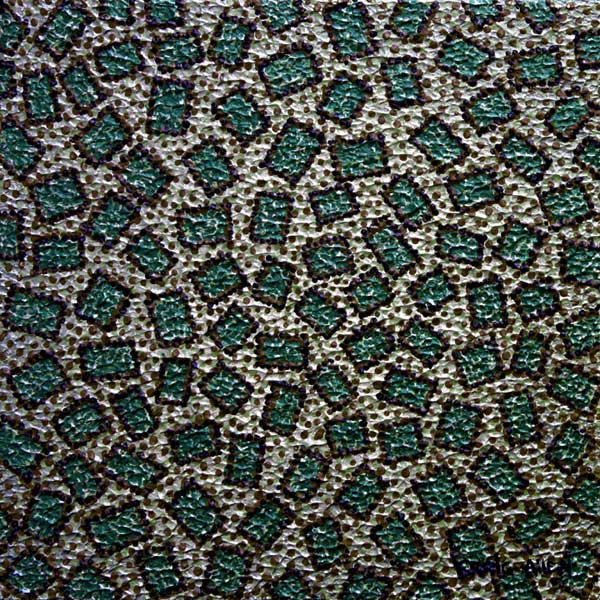
Evolving 3
No society, person or system has yet proven to be terminally unique. Pattern is evident in cultures both ancient and modern. I am fascinated by the regularity of design and pattern found in the artwork of the Aborigines of Australia and the stories they tell.
Repetition manifests itself in the work of artists. It can be quite beautiful, even mesmerizing. Pattern is not, however, limited to repetitive marks or even symbols. It holds space within a framework and structure much larger.
Turbulent flow is a fractal form in which energy is channeled down to ever finer scales, generating increasingly small structures in the process. The resulting forms can be chaotic – its impossible to predict exactly what they will look like or how they will evolve over time – but nonetheless they have a mathematical fractal structure that represents a kind of hidden order.
Philip Ball
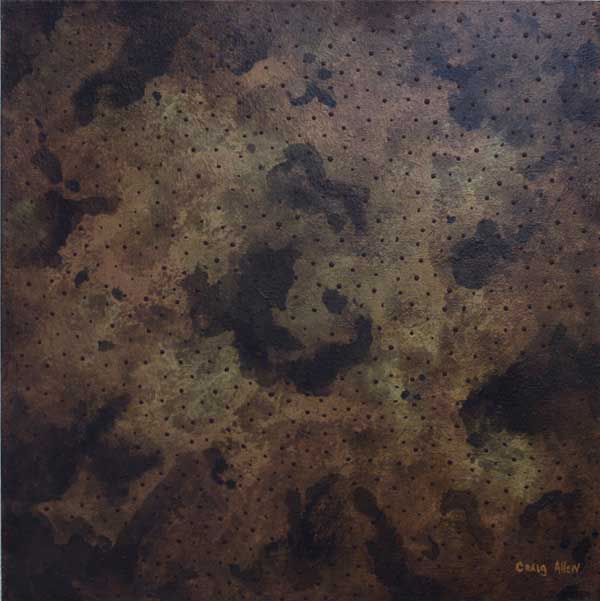
Pattern is writ large across the universe and we are infants in understanding. I am as much a form and product of the universe, as I am a witness to its wonder.
Starlight is Elemental 1
Dreaming of Cloudscapes
Reading Sky Pattern
To sit quietly and watch the clouds linger, shift and roll by is a magical experience. I feel there is something especially wonderful when looking at that space, were ocean meets the sky.
The sky and water are mirrors of one another. Ocean waves meet swirls and the delicate, short, detached, hair-like strands of Cirrus. It caresses the edge of the dense mounds, domes and towers of Cumulus. That edge, that stitched together horizon adds a sense of thrill to my life, to being alive in this world. Here I stand, both aware and subject to the whims of pattern.
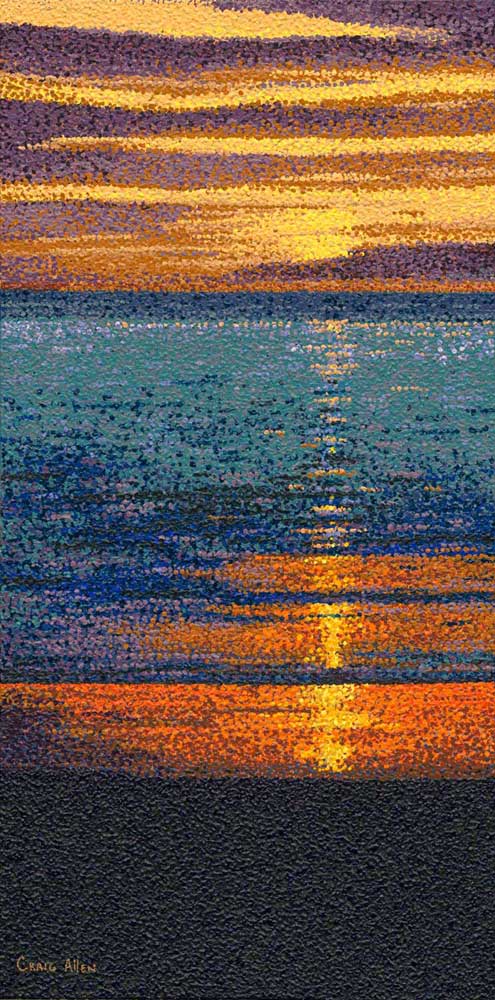
Sunset on Kaanapali Beach
A glowing array of intense orange sherbet and soft deep purples often fills the evening sky in Hawaii. The first time I saw it, I was stunned into silence. It seemed impossible, that what I had seen reproduced so often on a postcard could be real. Bathed in its glory, I realized there was a power in these islands, and in their skies.

Found in the magic of heavenly formations are dreams and imaginings. They take shape and then fade into the wind, like longings and desires. In them I see a caldera of feelings and emotions play in patterns across the surface of the sky.
Caldera Sky: Volcano National Park
In relation to that vastness, to the immensity of the atmosphere and hydrosphere, at what height can I possibly stand? I feel as if I am stretched gossamer-thin before the sea and vast sky. In their realm, I become aware of my fragility, of being a single being in a universe that stretches without end.
“Make of yourself a light” said the Buddha before he died. I think of this every morning as the east begins to tear off the its many clouds of darkness, to send up the first signal – a white fan streaked with pink and violet, even green.
Mary Oliver : Buddha’s Last Instruction
Watching the sky, watching clouds, I feel the calling of pattern and portent. How could it be otherwise? How could I not look for answers in the presence of such super-natural colors?
A glimpse of the unknown is cradled in the atmosphere. We have always looked skyward as a species. I have imagined all manner of beings and patterns inhabiting its realm.
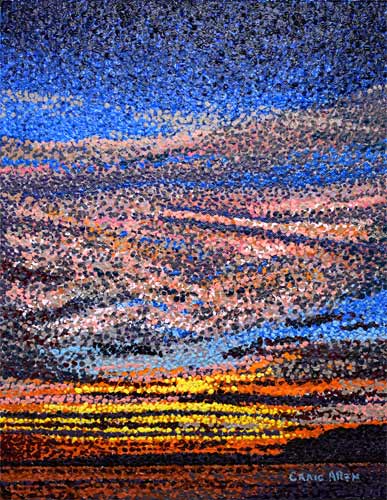
Impression Sunset
Our success as a species depends on our ability to look skyward and see something more than glimmering stars. Across the heavens are patterns, maps, star charts, and spiritual guides. Each blazing furnace of a star a ray of light on a journey begun, long ago.
Zen Story
… The Nature of the Real
“There was a hermit monk living in a cave in the mountains of Japan. He was a talented artist, and over time he painted a picture of a tiger on the wall of the cave. He was extremely meticulous in his work, and it took him several years to finish. When it was finally done, the tiger was so realistic that when he looked at it, he became frightened.”
– Painted Tiger: Zen Story
We Act According to …
Underlying Pattern in Habit & Thought
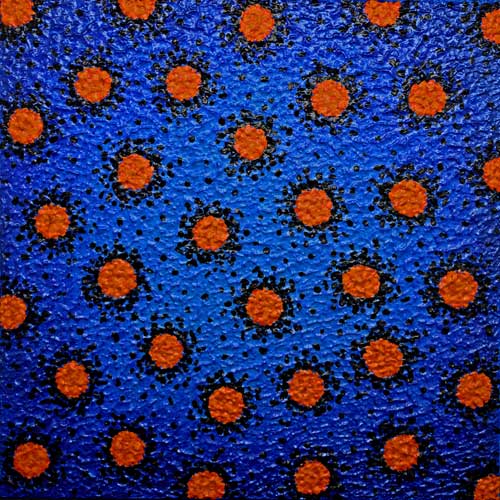
How deep must I look to see what patterns drive and shape the course of my work? To the cellular level or beyond? There are places to rest along a long and arduous path to discovery.
Cell: Blue with Orange
Life is pattern and pattern is matter. The world around me is not filled with empty spaces, but instead is densely filled. Underlying structures abound beyond my immediate perception. It is the very stuff the materials I use are made of. Linkages to small for my eye to see leave a breadcrumb trail to follow into the depths of pattern.
Meditation upon the perspective of its depth, matter is the very principle that can dissociate itself from forms. It is not the simple absence of formal activity. It remains itself despite all distortion and division. Moreover, matter can be given value in two ways : by deepening or elevating. Deepening makes it seem unfathomable, like a mystery. Elevation makes it appear to be an inexhaustable force, like a miracle. In both cases, meditation on matter cultivates an open imagination.
Gaston Bachelard
Felt and sometimes unseen, there are forces at work in my art. Sketching them out in language seems a bit skeletal without visual images. What do the words point to? Awareness of organizational forces and structures does not reduce their power.
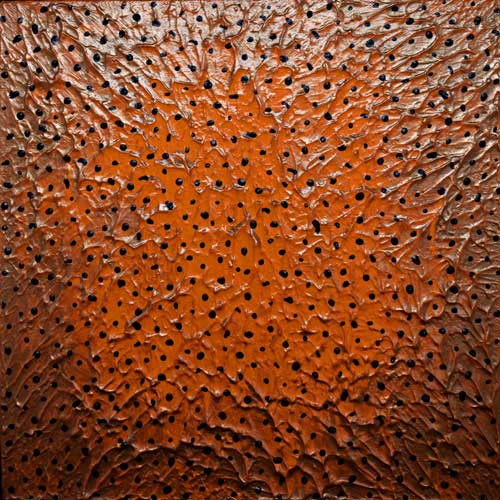
Clone: Orange
Patterns in (Human) Nature
The Leopard has Spots
In the living world, pattern formation seems both to restrict the options for adaptive change and to offer new adaptive opportunities – to operate, in other words, in parallel and sometimes in sympathy with Darwinian evolution. It supplies, for example, the color markings that animals put to striking use in camouflage, or as a warning signs to predators, or so that members of a species can recognize each other. Those patterns might not be arbitrary, but they can be useful.
Philip Ball: Patterns in Nature: Why the Natural World Looks the Way It Does
Writers toss me breadcrumbs to follow. It is a trail that leads beyond my paints and easel, and the books on my shelves. It leads towards recognition; and the desire and ability to see below the obvious.
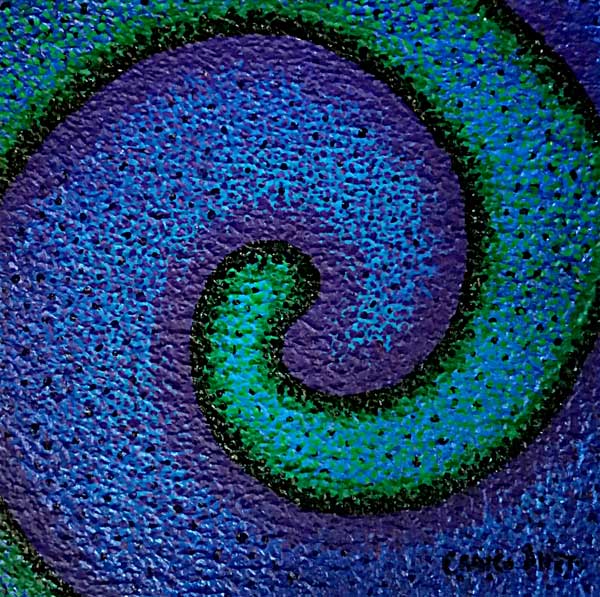
Counter-currents abound, forces of equal power moving in both directions. Waves hammer against the shores of philosophy.
Waveform 4
To be hopeful in bad times is not just foolishly romantic. It is based on the fact that human history is a history of not only human cruelty but also of compassion, sacrifice, courage, kindness. What we choose to emphasize in this complex history will determine our lives. If we see only the worst, it destroys our capacity to do something.
If we remember those times and places – and there are many – where people have behaved magnificently, this gives us the energy to act, and at least the possibility of sending this spinning top of a world in a different direction. And, if we do act, in however small a way, we don’t have to wait for some grand utopian future. The future is an infinite succession of presents, and to live now as we think humans should live, in defiance of all that is bad around us, is itself a marvelous victory.
Howard Zinn
Back to Nature …
The visible patterns in nature are only one set of elements in a vast system. A single equation, line of code, a single part of the Ecosphere. All of it integrates into my work as an artist on levels it often determines.
The Ecosphere, or Biosphere is the global ecological system that integrates all living beings and their relationships. It includes any interactions with the elements of the lithosphere, cryosphere, hydrosphere, and the atmosphere. It is a vast system with many overlapping patterns.
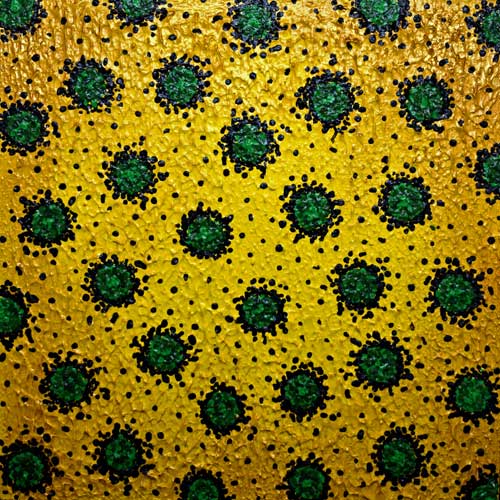
Cell: Yellow with Green
I have always been fascinated by the patterns of animals. The symmetry of pattern found in the scales of a fish, the colors of a beetle, the strips of a big cat’s fur, the wings of a butterfly or its caterpillar.
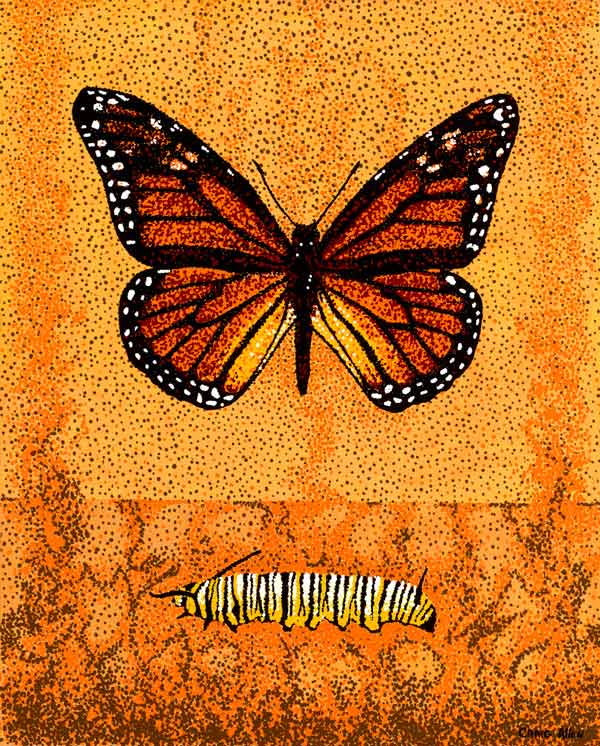
But it is the transformative powers and patterns in human nature and direct experience that guide and sometimes bind me. Do I struggle against ‘what is’ and ‘what was’?
Monarch & Caterpillar
Endless Nature
Stories & Pattern in Species
There are beautiful patterns to be found in painted desert hillsides, mountaintops, and in the flow of a river to the sea. They are clearly seen in the stripes of a zebra and the blotches of a giraffe. They tell us complex stories if we listen.
“While geology opened windows into the deep past, it simultaneously illuminated the landscapes of the present … geology taught its practitioners how to read the landscape, to understand what its features revealed about the processes that had shaped it in the past and were still shaping it in the present. To the geologically informed, the earth’s topography yielded its biography”
Rebecca Bedell: Essay, History of the Earth. In Endless Forms: Charles Darwin, Natural Science, and the Visual Arts
Deep evolutionary patterns emerge in the natural sciences and the shadows of our minds. Reactions and actions at the surface ripple over movement in the depths. Actions betray pattern, words, the landscape of our minds is forested, its waters deep.
Fight, flight and survival is a complex narrative. It is one we need to read.
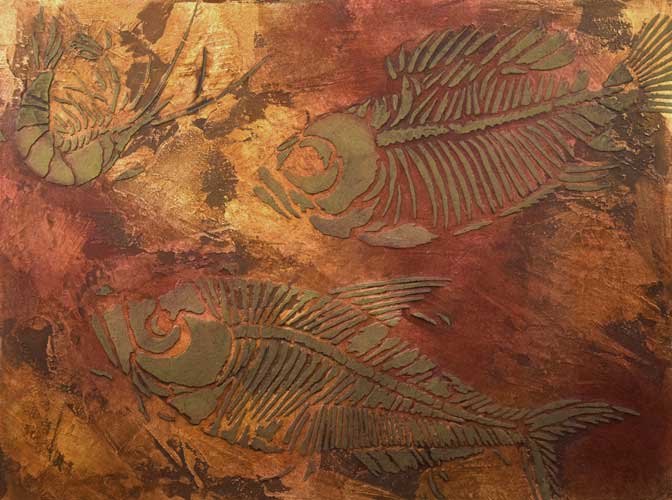
Fossil Fish #1
“More supple than the notion of system, more historical than the notion of structure, more empirical than the notion of complexity, the idea of network is the Ariadne’s Thread of (these) interwoven stories.”
– Bruno Latour
Story & Pattern
A Sense of Place
I have changed much over the years. The lines and patterns in the skin of my face have changed and my outlooks on life and sense of wellbeing. I am not who I was only a minute ago. Pattern appears in adaptations, if something works or not. I live, I work, I weave an Ariadne’s Thread.
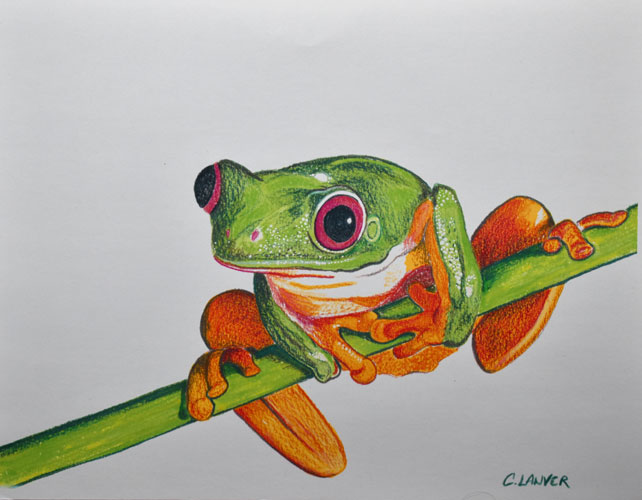
Co-evolutionary adaptive patterns work among species that exist in close interaction.
Frog
Plants adapt to insects, insect with plant, predator with prey, parasite with host, man with virus. They are visible ways in which organisms change to meet their environment. I imagine them as an escalating arms race. A race of defense to offense, and offense to defense.
Science has shed much light on great mysteries. It has left its mark on the arts. There was a great shifting of role for the artist throughout the nineteenth century. Art was once only a handmaiden of gods, church, and emperors. It too, became an apostle of science and that heresy echoes across the ages.
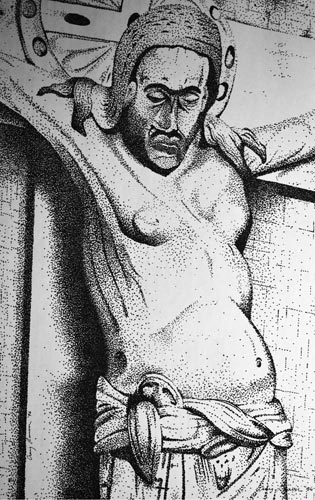
Gero Crucifix
“For landscape painters, the new vision of the Earth bestowed on their chosen subject – the land – a life and a history. Geology’s revelations deeply affected their creative imaginations, drawing them to new subjects and impelling them to develop new pictorial strategies to express their transformed understanding of the Earth. Perhaps most importantly, geology theory informed and thereby transformed artist’s vision. Seeing and knowing are intimately related.”
– Rebecca Bedell: Endless Forms: Charles Darwin, Natural Science, and the Visual Arts. Diana Donald (Editor),
Jane Munro (Editor), Fitzwillian Museum Cambridge (Editor)
Journal Entry: Nature of Pattern
Stories in our Behavior
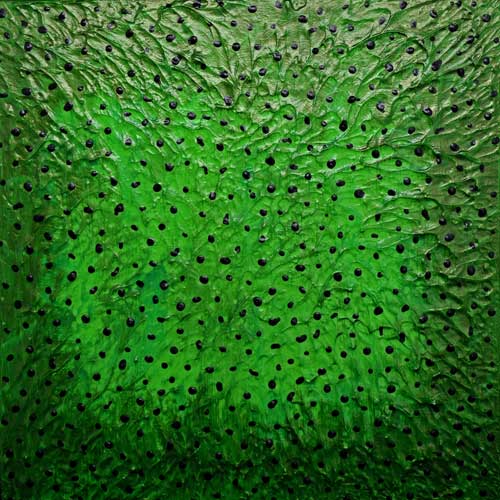
Our thoughts betray patterns. Mindfulness leads to awareness and awareness to change. Much like in art, it begins with observation.
Clone: Green
“Snap-to’ conclusions, anxiety, doubt and depression. They flow outward and inward. Joyous leaps of faith and love, find root and purchase in the past. In the river of life I remember not to cling to the banks and flow with the current. I do not hold on to the familiar and embrace change as I move. I feel a tug to pull me under.
“To choose doubt as a philosophy of life is akin to choosing immobility as a means of transportation.”
– Yann Martel; Life of Pi
Trapped at sea, in a boat with a tiger. What mind game must I play to survive. Doubt a predatory triggering emotions. In art I look towards the end of my sum-total of experiences, in this life. The past stretches out behind me and the future remains cloudy and unclear.
My countless compulsions, interactions, thoughts, and fascinations, rest on a foundation of patterns.
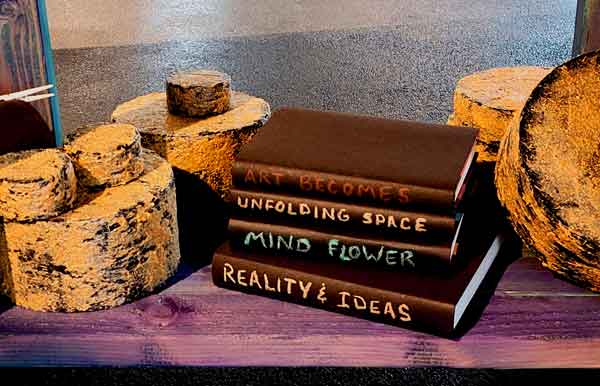
Books & Elements : 10 x 10 x 10 Installation Challenge
The patterns found on animals suggests survival is found in adaptive changes and strategies. External forces exert their pressure with one pattern pushing and pulling against the currents of another.
Being Mindful
I manifest through action. A domino tumbling in time. Rippling patterns flow away from a skipped stone across a still lake. The water ripples in reaction and soon resumes its calm placidity.
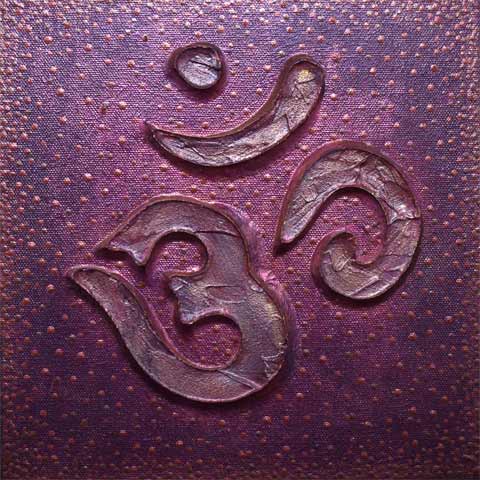
In the practice of mindfulness, I see a path to harmony, a calm placidity in a raging ocean. Life is a rippling wavelength of change and challenge and constant flow.
Om: Royal Purple
Pattern in Science
Ancient Greek philosophers looked for universals answers and greater meaning in their world. These early scholars sought pattern in what they observed. Not much has changed, save perhaps the tools.
Mathematics looks to define and explain regularities of any kind. Physics seeks to apply these abstracts to the real and tangible world. Biologists and other scientists seek to define the patterns that govern life. My role as an artist is to explore beyond what I know.
There are subtle patterns in life that go unnoticed, seeking always to defy logic, perception or reason.
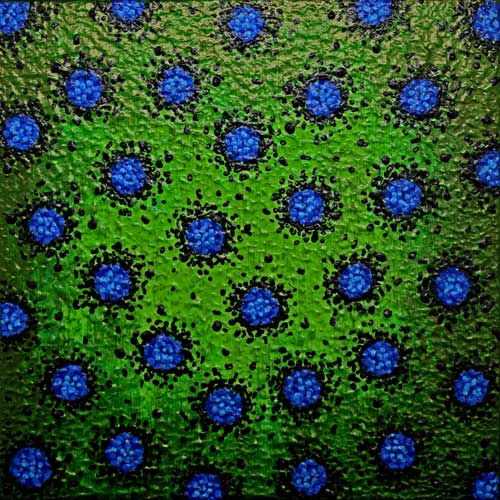
Cell: Green with Blue
“A critically important part of a cell, be it a prokaryote or a eukaryote, is its outer membrane. Although, just two molecules thick, this outer membrane forms a flexible ‘wall’ or barrier that separates each cell from its environment, defining what is ‘in’ and what is ‘out’. Both philosophically and practically, this barrier is crucial. Ultimately, it explains what life forms can successfully resist the overall drive of the universal towards disorder and chaos. Within their insulating membrane, cells can establish and cultivate the order they need to operate, whilst at the same time creating disorder in their local surroundings outside the cell. That way life does not contravene the Second Law of Thermodynamics.”
– Paul Nurse : What Is Life? Five Great Ideas in Biology
The Rhythm of Life
A Framework of Pattern
Nature is the scientist’s greatest teacher. This is true for the artist, as well. In iwords and image I coast along symmetries, spirals, waves, cracks and stripes, in a meandering road of metaphor.
I have learned from observing the branching of trees, plants and rivers. In eddies and swirls, in the galaxy’s spirals, I am led out and arrive, within.
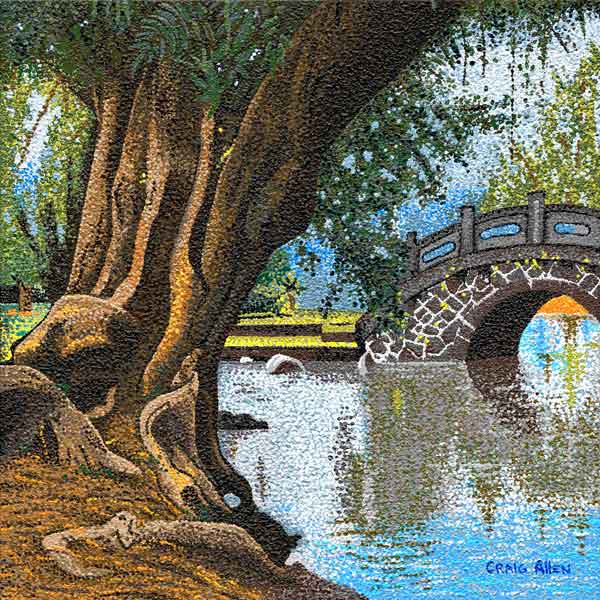
There is pattern in creating a pointillist painting. A repetitive act of placing one dot next to another. Hours coalesce into the new forming bridge, water and sky.

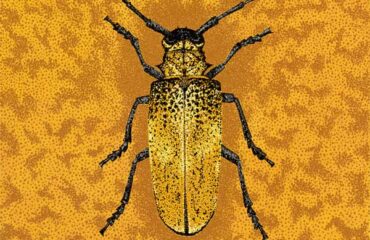

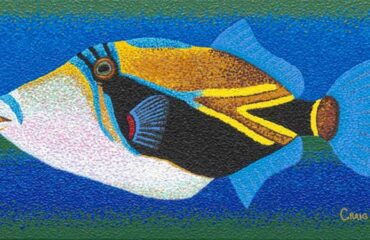
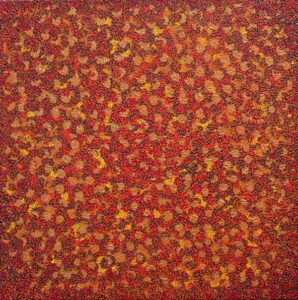
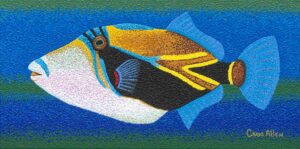
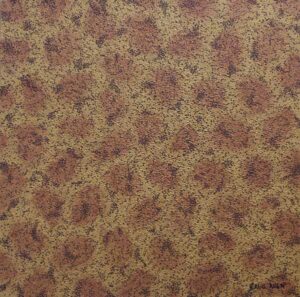
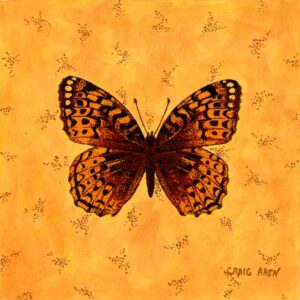
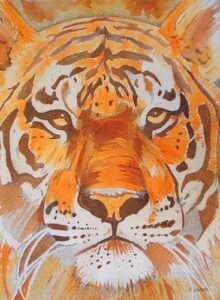
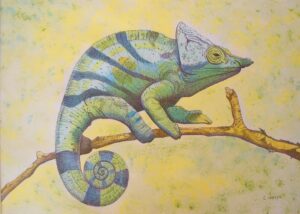
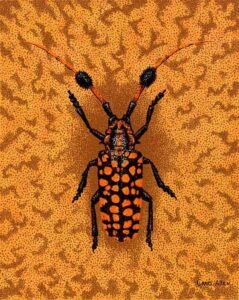
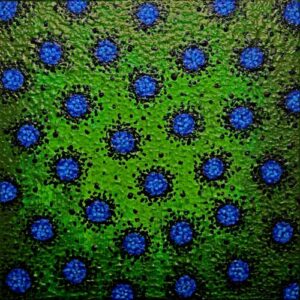
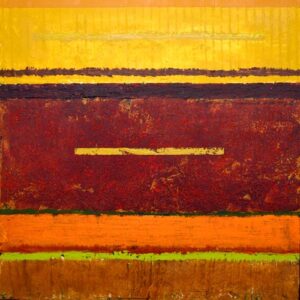
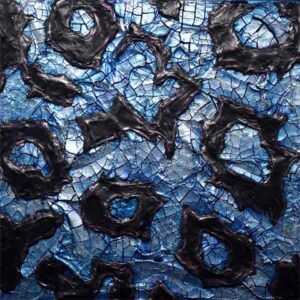
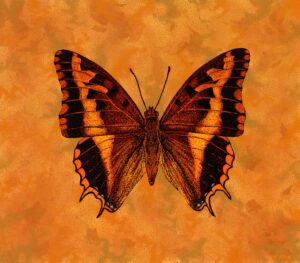
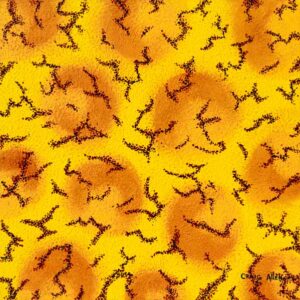
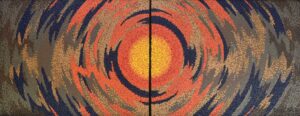
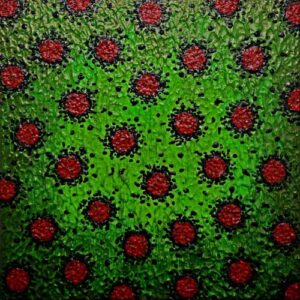
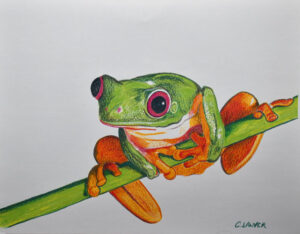

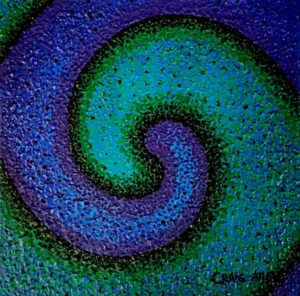
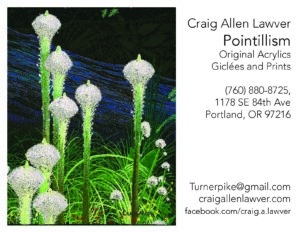

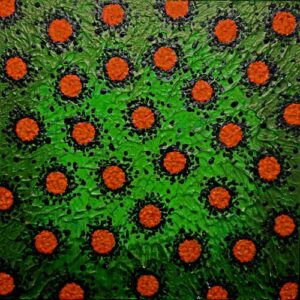
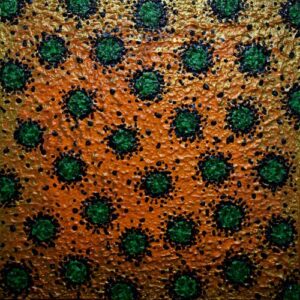
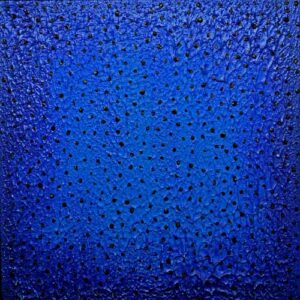
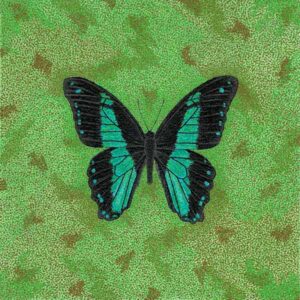

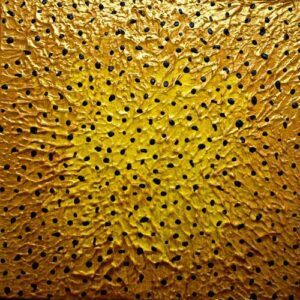
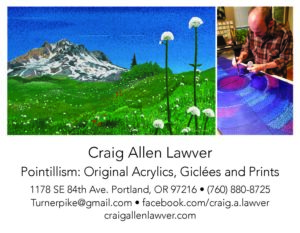
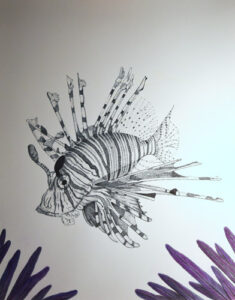
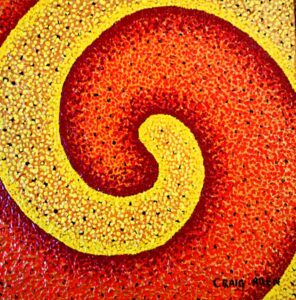
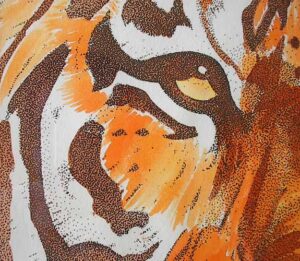
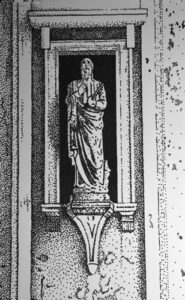
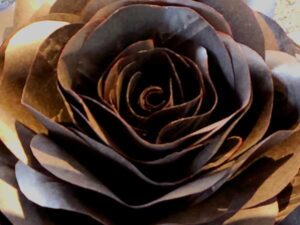
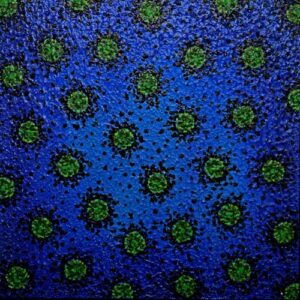
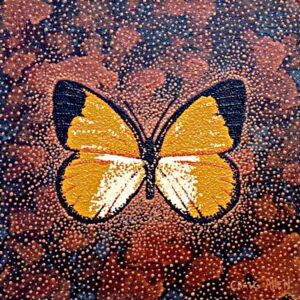
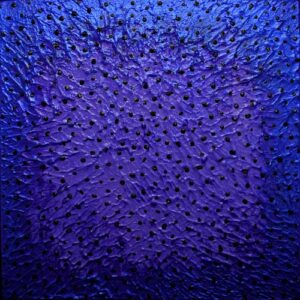

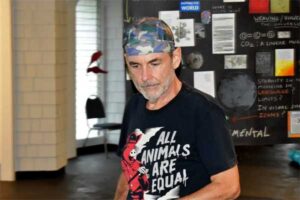
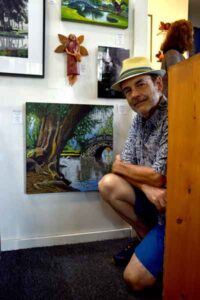
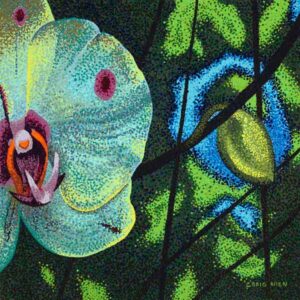
Facebook: Craig Allen Lawver Art